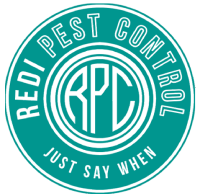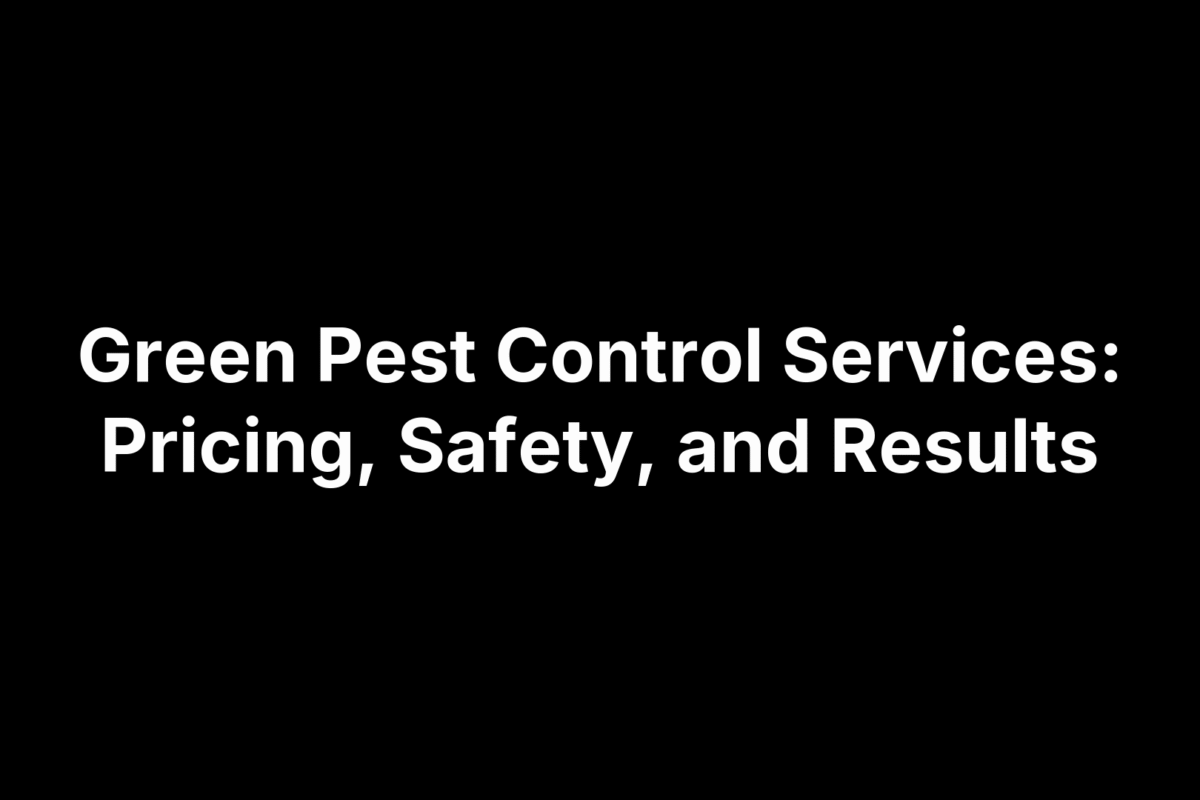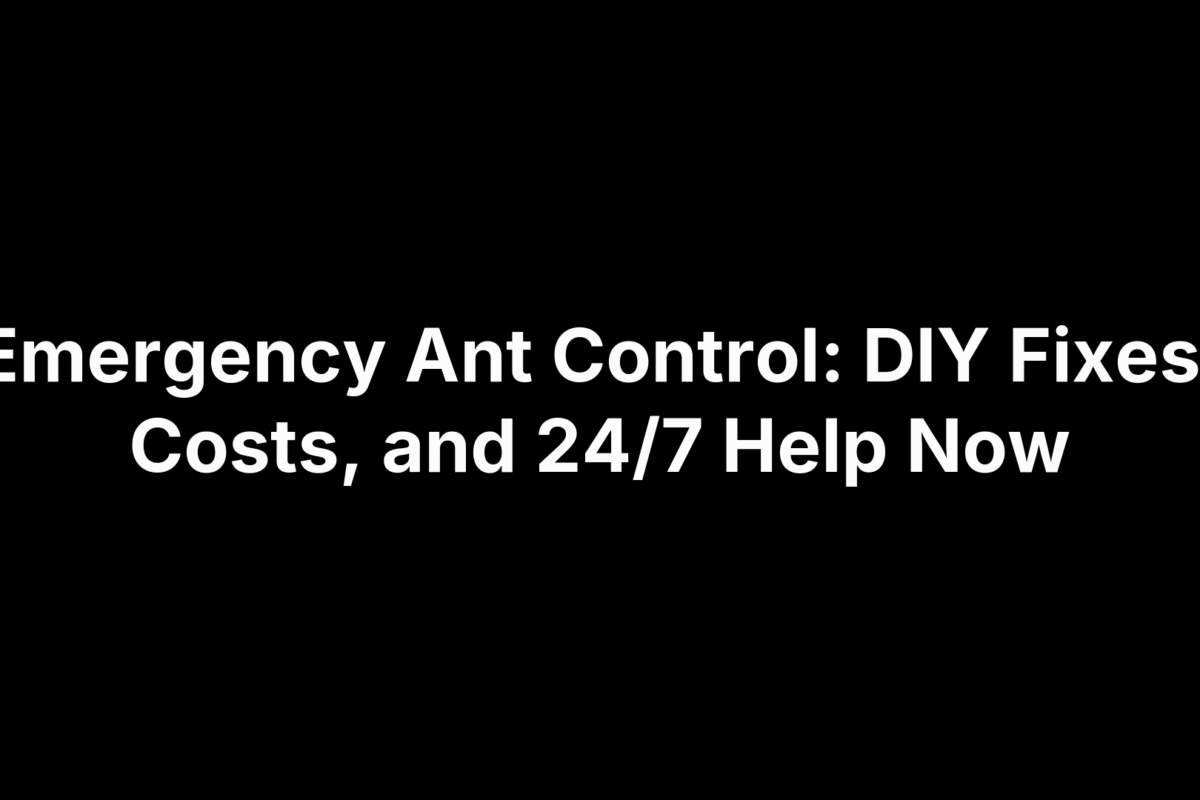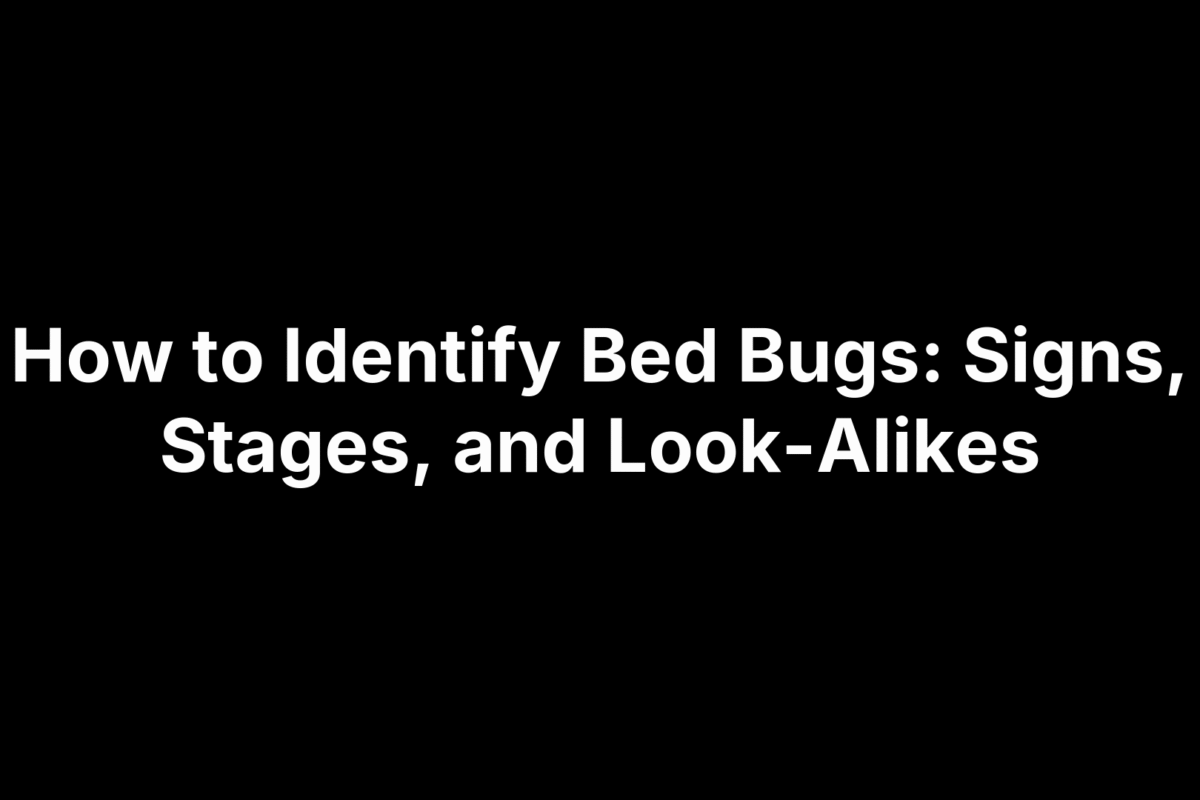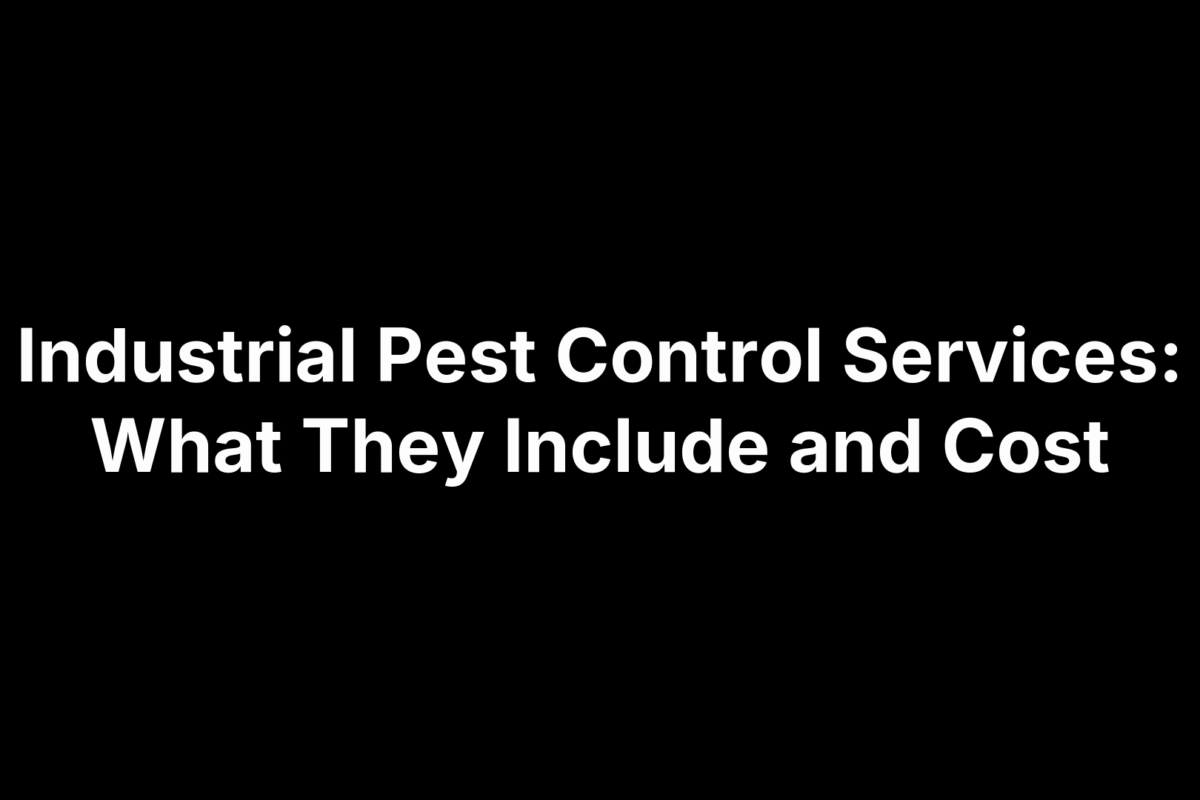Green pest control services use natural and eco-friendly methods to eliminate pests from your home or business. These companies rely on plant-based ingredients, essential oils, and targeted treatments instead of harsh synthetic chemicals. You get effective pest removal that protects your family, pets, and the environment at the same time.
This article breaks down everything you need to know before hiring a green pest control provider. You’ll learn how to evaluate companies, what treatments actually work, and what you should expect to pay. We’ll also tackle common myths about eco-friendly pest control and show you why natural methods can be just as effective as traditional chemical treatments. By the end, you’ll have clear answers about whether green pest control services fit your needs and budget.
Why green pest control services matter
Traditional pest control methods expose your family to synthetic chemicals that linger on surfaces, in carpets, and in the air you breathe. Green pest control services eliminate this risk by using natural alternatives that break down quickly without leaving harmful residues. You protect everyone in your household while still getting rid of pests that invade your space.
Health protection for vulnerable groups
Chemical pesticides pose serious risks to children, pregnant women, and pets who spend time near treated areas. Young children crawl on floors and put their hands in their mouths, making them especially vulnerable to toxic residues that conventional treatments leave behind. Eco-friendly methods use ingredients like peppermint oil, diatomaceous earth, and boric acid that target pests without threatening the health of your family members.
Pets also benefit from green pest control because they lie on treated surfaces and groom themselves with their tongues. Dogs and cats can experience respiratory issues, skin irritation, and digestive problems from exposure to harsh chemicals. Natural treatments give you peace of mind knowing your pets can move freely through your home without risking their health.
Environmental impact and long-term effects
Synthetic pesticides don’t just stay where you spray them. Runoff from treated properties contaminates soil, groundwater, and local waterways, harming beneficial insects, birds, and aquatic life. Green pest control prevents this environmental damage by using biodegradable solutions that break down naturally without polluting ecosystems.
The chemicals you use indoors eventually make their way outside through drains, tracked soil, and direct application around your property’s perimeter.
You also protect pollinators like bees and butterflies that play a critical role in local food production and plant health. Traditional pesticides kill these beneficial insects along with the pests you’re targeting. Natural methods focus on specific pest species while leaving helpful insects unharmed, supporting the ecological balance in your yard and neighborhood.
How to choose green pest control services
Finding the right green pest control services requires more research than simply picking the first company that advertises eco-friendly treatments. You need to verify their credentials, understand their methods, and compare what different providers offer before signing a contract. Smart selection protects your investment and ensures you get effective pest elimination without compromising on safety or environmental responsibility.
Check credentials and certifications
Start by verifying that your potential provider holds proper licensing for pest control operations in your state or municipality. Each region has different requirements, and legitimate companies display their license numbers on their websites and marketing materials. You can typically confirm these credentials through your state’s department of agriculture or pest control board to make sure they’re current and in good standing.
Look for additional certifications in integrated pest management (IPM) or green pest control practices. Organizations like GreenPro and EcoWise certify companies that meet strict standards for environmental safety and effective treatment methods. These certifications show that a provider has invested in proper training and follows established protocols for natural pest elimination.
Ask about specific products and methods
Request detailed information about the exact products your provider uses for different pest types. Reputable companies explain their ingredients and how each treatment works without hiding behind vague terms like "natural solutions" or "eco-friendly formulas." You should understand whether they’re using essential oils, biological controls, physical barriers, or other specific approaches.
Quality providers customize their treatment plans based on your specific pest problem rather than using a one-size-fits-all approach.
Treatment frequency matters as much as the products themselves. Green pest control often requires multiple visits to break pest life cycles naturally without relying on long-lasting synthetic chemicals. Ask how many treatments you’ll need, what the follow-up schedule looks like, and how they monitor results between visits.
Compare pricing and service agreements
Get written quotes from at least three providers that break down service costs by visit, treatment type, and any additional fees. Some companies charge per visit while others offer monthly or quarterly plans that include unlimited retreatments if pests return. Clear pricing structures help you avoid surprise charges and compare true costs across different providers.
Read service agreements carefully before signing anything. Check for guarantee periods, cancellation policies, and what happens if treatments don’t work as expected. Strong companies stand behind their results with warranties that cover retreatments at no extra cost if pests come back within a specified timeframe.
Review customer feedback and results
Search for recent reviews on multiple platforms to get a balanced perspective on each provider’s performance. Pay attention to comments about punctuality, technician knowledge, treatment effectiveness, and how companies handle problems. Consistent patterns in reviews tell you more than individual complaints or praise.
Contact references directly if the company provides them. Ask previous customers about their pest problems, how long treatments took to work, and whether they experienced any issues with pets or family members during the process. Direct conversations give you insights that online reviews might miss.
What to expect from eco friendly treatments
Eco-friendly pest treatments work differently than conventional chemical applications, so you need to adjust your expectations about timing, methods, and follow-up requirements. Natural solutions target pest biology and behavior instead of overwhelming insects with synthetic toxins, which means you’ll see results develop over days rather than hours. Understanding this process helps you evaluate whether treatments are working and prevents frustration during the elimination cycle.
Treatment application and initial visits
Your technician will conduct a thorough property inspection before applying any products, identifying entry points, nesting areas, and conditions that attract pests to your space. This initial assessment takes longer than traditional spray treatments because green pest control services rely on precise targeting rather than blanket chemical coverage. Expect your first visit to last 60 to 90 minutes as the technician explains what they found and outlines your customized treatment plan.
Application methods vary widely depending on your pest problem. Diatomaceous earth gets applied to cracks, crevices, and wall voids where insects travel, while botanical sprays treat visible surfaces and potential entry points. You might also see physical modifications like door sweeps, screen repairs, or caulking to prevent future pest access. Natural treatments often combine multiple approaches in a single visit to address different aspects of your infestation.
Your home remains safe for immediate occupancy after eco-friendly treatments, with no need to evacuate or wait hours before returning like you would with conventional pesticides.
Timeline for visible results
Natural pest elimination takes more time than synthetic chemicals because these products work through contact and ingestion rather than spreading toxic residues throughout your property. You’ll typically notice significant pest reduction within 7 to 14 days for common insects like ants and roaches, though some activity may continue as treatments break the colony’s life cycle. Larger infestations require patience as natural products slowly eliminate pests without the immediate knockdown effect of harsh chemicals.
Rodent control using eco-friendly methods follows a different timeline. Trapping and exclusion work combined with natural repellents usually show results within two to three weeks, depending on the size of the rodent population. Your technician monitors trap activity during follow-up visits and adjusts placement based on rodent movement patterns rather than relying on toxic bait stations.
Ongoing maintenance requirements
Green pest control requires more frequent monitoring than conventional treatments because natural products don’t create long-lasting chemical barriers around your property. Expect monthly or bi-monthly follow-up visits during the first three to six months while your technician ensures pests don’t reestablish. These visits focus on reapplication and prevention rather than reactive spraying, catching new pest activity before it becomes a full infestation.
Your participation matters more with eco-friendly treatments than traditional services. Sanitation and exclusion form the foundation of successful natural pest control, so you’ll need to maintain clean conditions, seal food properly, and address moisture issues that attract pests. Technicians provide specific recommendations during each visit, and following through on these suggestions determines how well treatments work long term. Properties with ongoing maintenance see pest populations decline steadily over several months until only occasional monitoring visits are needed to prevent future problems.
Costs of green pest control services
Green pest control services typically cost between $150 and $350 for initial treatments, depending on your property size and pest problem severity. You’ll find that eco-friendly options often run 10 to 20 percent higher than conventional chemical treatments because natural products require more frequent applications and specialized training to use effectively. The investment makes sense when you factor in the health benefits and environmental protection you get with natural solutions.
Initial treatment pricing
Your first visit carries the highest cost because technicians spend extra time inspecting your property, identifying pest entry points, and developing a customized treatment plan. Single-family homes between 1,500 and 2,500 square feet usually see initial treatment prices from $175 to $300, while larger properties or severe infestations push costs toward $400 or more. This initial service includes the inspection, first treatment application, and detailed recommendations for preventing future pest problems through sanitation and exclusion improvements.
Specific pest types affect pricing more than property size in many cases. Bed bug treatments using natural methods like heat or steam start at $500 to $1,200 because they require specialized equipment and multiple visits to eliminate all life stages. Termite control with eco-friendly baiting systems runs $800 to $2,000 for initial installation and monitoring, comparable to conventional termite treatments but without toxic chemicals near your foundation.
Ongoing service plans
Most providers offer monthly or quarterly plans that reduce per-visit costs while maintaining pest-free conditions throughout the year. Monthly service typically runs $75 to $125 per visit and works best during the first six months as you establish control over persistent infestations. Quarterly plans drop to $100 to $175 per visit once you’ve broken pest life cycles and shifted from elimination to prevention mode.
Annual contracts often include discounts of 15 to 25 percent compared to paying for individual visits, plus guarantees that cover retreatments at no extra charge if pests return between scheduled appointments.
Commercial properties face higher ongoing costs because of larger square footage and stricter regulatory requirements for pest management. Small offices and retail spaces pay $150 to $350 monthly for regular service, while restaurants and food processing facilities requiring intensive monitoring can exceed $500 per month depending on size and inspection frequency.
Factors that affect your final bill
Property size and layout directly impact how long treatments take and how much product technicians need to apply. Multi-level homes, crawl spaces, and attics add complexity that increases labor time and material costs. You’ll pay more for properties with extensive landscaping that requires perimeter treatment or structural issues like damaged screens and unsealed cracks that need repair before pest control can succeed.
Your location influences pricing through local market rates and seasonal pest pressure. Urban areas with high competition sometimes offer lower prices than rural regions where fewer providers operate, though this varies significantly by state. Seasonal factors matter too because spring and summer bring peak pest activity that requires more intensive treatments compared to winter maintenance visits.
Common myths about green pest control
Several misconceptions about eco-friendly pest elimination prevent people from trying natural solutions that actually deliver results. These myths often come from outdated information or comparisons to ineffective DIY treatments that don’t match what professional green pest control services provide. Understanding the truth behind these claims helps you make informed decisions about protecting your property without unnecessary chemicals.
Natural treatments take too long to work
You’ll hear that eco-friendly pest control requires weeks or months to show any results, but this claim ignores how modern natural treatments perform in real applications. Professional-grade botanical sprays and targeted applications eliminate visible pests within 7 to 14 days for most common insects, matching or beating the timeline for synthetic alternatives once you account for reapplication requirements. The difference comes from product concentration and application methods that professionals use versus what homeowners try on their own.
Natural methods do require different approaches for different pests. Diatomaceous earth kills insects through physical contact within 48 hours, while biological controls like beneficial nematodes need time to establish populations that suppress pests long term. Your technician matches treatment methods to your specific problem instead of using one chemical solution for everything.
Eco-friendly methods cost significantly more
Price comparisons often focus on initial visit costs without examining total investment over time. Natural pest control typically runs 10 to 20 percent higher upfront, but you avoid health costs from chemical exposure and property damage from harsh pesticides that degrade surfaces. The real savings come from prevention-focused approaches that reduce future infestations rather than creating cycles of repeated chemical applications.
Quality green pest control services often include more thorough inspections, detailed recommendations, and follow-up monitoring that conventional spray-and-go treatments skip entirely.
You also eliminate the need for separate services when natural methods address multiple pest types in single treatments. Integrated pest management reduces overall costs by preventing new infestations rather than just killing existing pests temporarily.
Bringing it all together
Green pest control services deliver effective pest elimination without exposing your family to harmful synthetic chemicals. You now understand how natural treatments work, what they cost, and why they take slightly longer than conventional methods to show full results. The health benefits and environmental protection make eco-friendly options worth the small price difference and adjusted timeline expectations.
Choosing the right provider requires checking credentials, comparing treatment methods, and reviewing customer feedback from multiple sources. Your investment pays off through safer indoor air quality, reduced health risks for children and pets, and protection of beneficial insects around your property. Natural pest control builds long-term prevention rather than creating cycles of chemical dependency that never truly solve your pest problems.
Contact Redi Pest Control to schedule an inspection and learn how professional eco-friendly treatments can eliminate your pest issues while protecting your family, pets, and the environment.
